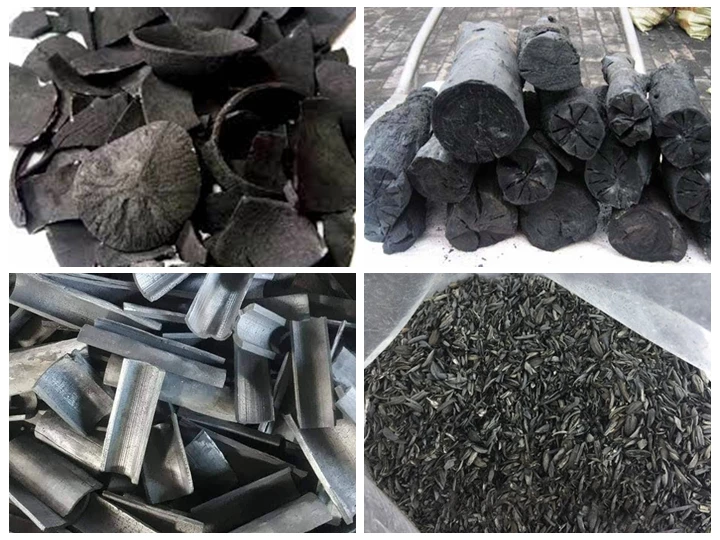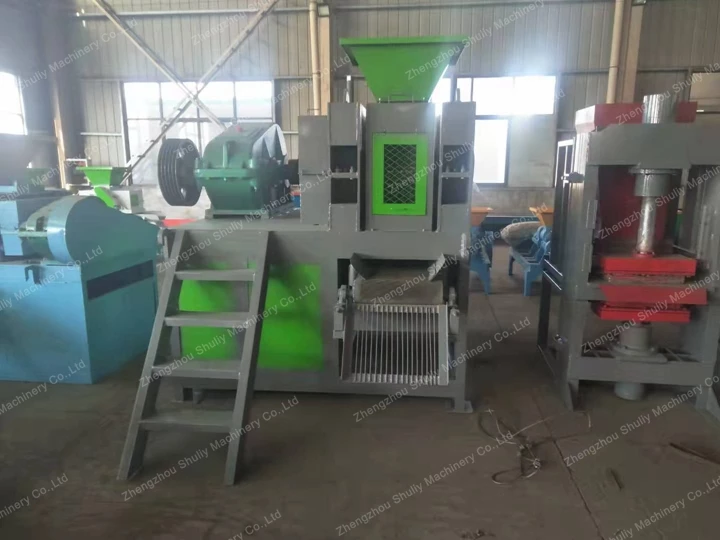How to make charcoal for barbecue?
BBQ charcoal, also known as barbecue charcoal, is a type of charcoal specifically designed for grilling and barbecuing food. Its popularity stems from its ability to provide consistent and long-lasting heat, making it an ideal choice for outdoor cooking. Whether you are a barbecue enthusiast or a barbecue charcoal dealer, you must be curious about the processing process of barbecue charcoal. In this article, we will explain to you in detail all the information about processing barbecue charcoal, including the raw materials required to produce barbecue charcoal, the processing process, the required equipment or tools, etc.
Steps to make barbecue charcoal
No matter how you want to process barbecue charcoal, you must first obtain the raw materials for processing barbecue charcoal, namely charcoal powder, or charcoal dust. If your raw material is lump wood charcoal, we recommend that you use a crusher to crush lump charcoal. Fine charcoal powder is the prerequisite for processing high-quality BBQ charcoal briquettes.

Processing barbecue charcoal using charcoal fines (charcoal powder) is an effective way to convert charcoal powder and other raw materials into a high-quality barbecue charcoal product.
General steps involved in making barbecue charcoal
Step 1: Preparing the Raw Materials
Charcoal Powder: Gather sufficient quantities of charcoal powder, which can be charcoal or other charcoal powders, usually wood or plant residues.
Binding agent: Starch, cornstarch, wheat flour, or other binders are usually used to help the charcoal powder retain its shape.
Additives (optional): Some spices or smoked wood chips can be added to give the BBQ charcoal a different flavor.
Step 2: Mixing the Charcoal Powder
Mix the charcoal powder and binding agents together, making sure they are evenly dispersed. This usually requires a mixer or blender.
Step 3: Molding
Use a BBQ charcoal molding machine or BBQ charcoal machinery to form the mixed raw materials into desired shapes such as spheres, pillows, squares, or other custom shapes.
Step 4: Drying
Place the formed barbecue charcoal in a well-ventilated area or use drying equipment to remove excess moisture and make the charcoal hard and easy to ignite.
Step 5: Packaging
Once the barbecue charcoal is completely dry, you can use a charcoal ball packaging machine to package it into a suitable package, usually a bag or box. Make sure the packaging maintains the quality and moisture content of the charcoal.
Step 6: Quality Control
Conduct quality control tests to ensure that the charcoal meets the required quality standards, such as density, burn time and temperature.
Step 7: Distribution
The processed barbecue charcoal can be distributed to supermarkets, barbecue supply stores, restaurants, and other places for customers to buy and use.
What kind of charcoal is suitable for processing barbecue charcoal?
When choosing the right charcoal material for making barbecue charcoal, it is critical to consider their heat production, burn time, smoke flavor, and availability. Different types of charcoal are suitable for different types of barbecue needs. The best barbecue charcoal is usually pure and contains no additives or chemicals to ensure food safety and flavor.

When making barbecue charcoal, the following types of charcoal are usually chosen as raw materials:
- Wood Charcoal: Wood charcoal is one of the most common raw materials for barbecue charcoal because of its ability to provide high heat and long-lasting burn time. Common woods include oak, maple, basswood, and fruitwoods (such as apple, cherry, and mahogany). These woods usually produce grilled foods with excellent flavor.
- Coconut Shell Charcoal: Coconut shell charcoal is another popular choice. Derived from coconut shells, it has a light, smoky flavor and provides consistent high temperatures and a long burn. Coconut charcoal is also considered environmentally friendly because it uses renewable coconut shells as a raw material.
- Bamboo Charcoal: Bamboo charcoal is a relatively new but increasingly popular option. It comes from bamboo and is usually made by treating it at high temperatures. Bamboo charcoal provides stable temperatures and combustion, as well as a number of environmentally friendly features.
- Hardwood Charcoal: Hardwood charcoal comes from hardwood trees such as oak, beech, and maple. The charcoal from these woods is usually harder and hotter, making it suitable for long barbecues.
- Herbaceous Charcoal: Some barbecue charcoal is made from herbs or straw, often with binding agents such as starch added to keep the shape. This type of charcoal is usually suitable for short barbecues.
Recommended equipment for making barbecue charcoal
For customers who want to engage in barbecue charcoal production business, a series of bbq charcoal machines are essential. As an enterprise that has been engaged in manufacturing and exporting charcoal equipment for many years, Shuliy Factory recommends several practical equipment to you.
If you don’t have charcoal raw materials, you can build a charcoal kiln or buy a carbonization furnace to convert various raw materials into charcoal. If you have charcoal, you can decide whether you need barbecue charcoal processing equipment according to your own needs.
- Charcoal Crusher: The Charcoal Crusher is used to crush the carbonized lump charcoal into the desired particle size. This helps to produce consistent barbecue charcoal.
- Mixing Machine: The mixing machine is used to blend the charcoal powder and binder to form a mixture suitable for molding.
- Briquetting Machine: The Briquetting Machine presses the charcoal powder and binder into the desired shape of barbecue charcoal.
- Dryer: A dryer is used to remove moisture from barbecue charcoal to ensure its stability during storage and use.



No Comments.